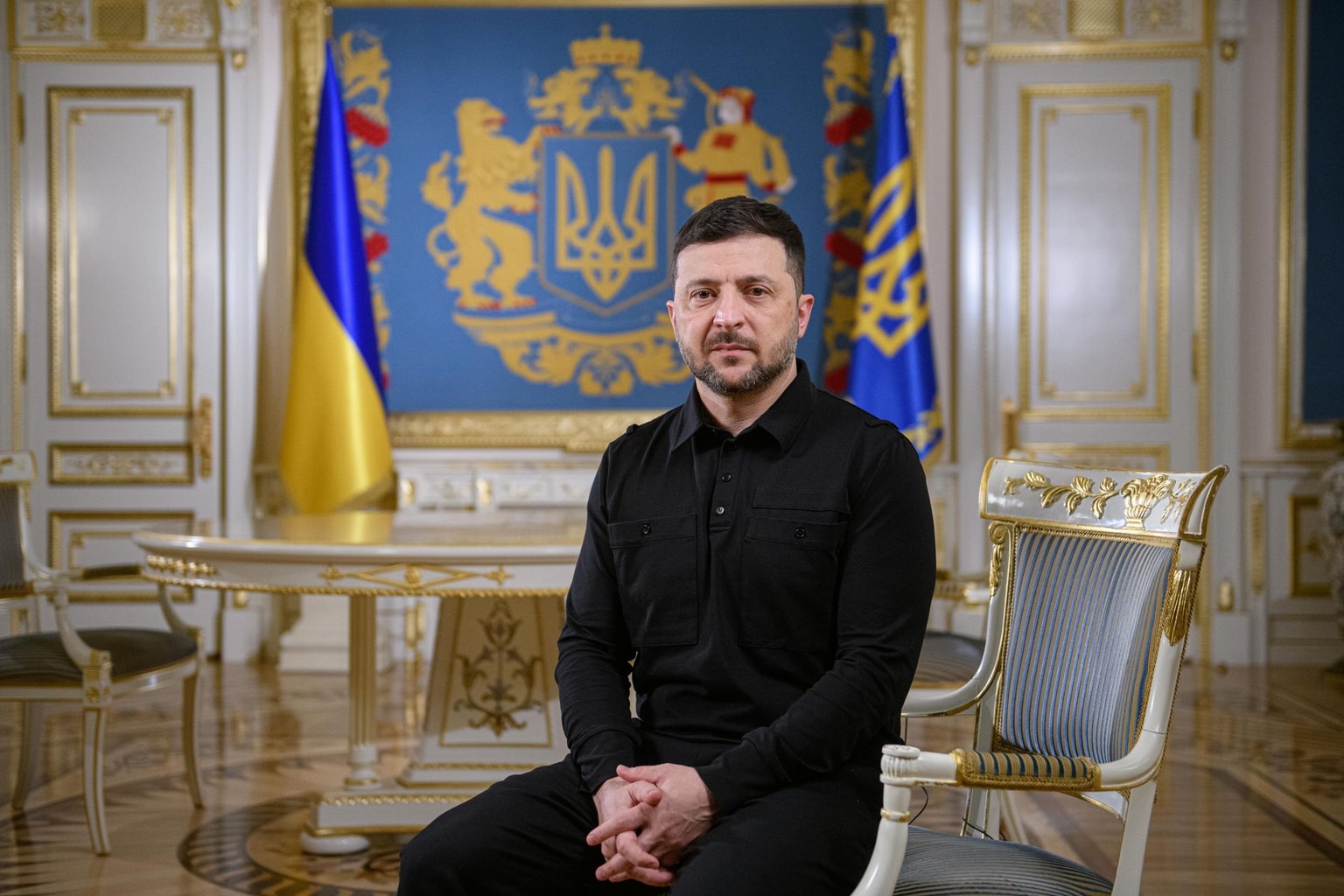20 minutes to Kherson: What the battle for the south looks like
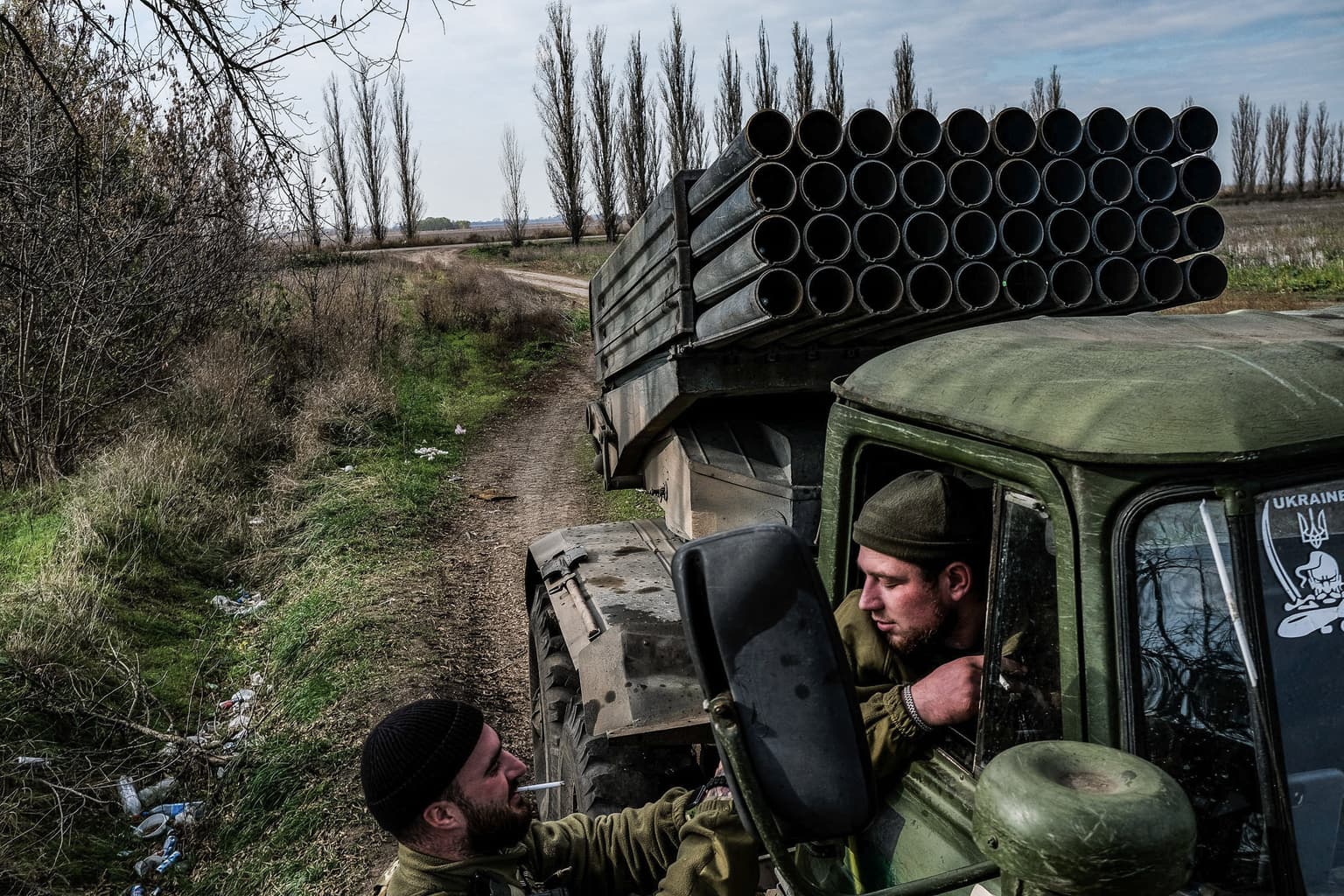
MYKOLAIV OBLAST — The low November sun slips in and out of the clouds near the regional border between Kherson and Mykolaiv.
The last of the autumn leaves, the color of rust and flame, blow across the barren field as a handful of Ukrainian soldiers climb a small tree and go at it with a chainsaw.
They want the branches as camouflage for their dark-green Grad multiple rocket launcher, parked just behind the tree line. Its attendant civilian-grade command SUV, which carries the officer in charge, the targeting specialist and the medic, sits just nearby.
Almost every day, this team is given a target, told to drive into range, calculate the shot, unleash a barrage of rockets and get out of there before return fire comes flying in. As they wait for the call, we can hear the dull booming of both sides’ weapons in the distance.
"Everything is very simple: we get information on a target, the senior officer does all the calculations on a tablet using a special program, selects a firing position, we go to that position, we do our work and get out of there, so we're not intercepted," says Ihor, callsign Raven, who commands the Grad launcher itself. Troops have not been identified by full name for their safety on and off the battlefield.
Occasionally they work with drone support, which lets them correct their fire in real time and get a video showing how they did.
“It’s very nice to see your targets burned down,” says Raven.
This unit is just a small part of the 59th Motorized Brigade that's defending Mykolaiv and trying to push Russian forces deeper back into Kherson Oblast. The full-scale invasion in February had caught the 59th behind enemy lines at Oleshky Sands, south of the Dnipro River.
The brigade executed a fighting retreat, shooting its way through the Russian forces that had leapfrogged it and captured the Antonivsky Bridge across the Dnipro. Once the brigade made it to Mykolaiv Oblast, it held the line and repelled the Russian onslaught, before starting to push the invaders back towards the southeast.
“This brigade destroys enemies every day,” says Maj. Serhiy Tsehotskiy, the 59th’s press officer. “Just today, we hit three armored vehicles, two tanks, one self-propelled artillery, one D-20 howitzer, and had 10 confirmed soldier kills, and about 15 wounded. This is just one day, and it wasn’t even very active.”
“We pushed them back in the fall,” says Raven. “As we push the enemy back towards Kherson, we are getting closer to Kherson ourselves.”
Indeed, an infantryman with the callsign Sheriff, who mans a checkpoint just down the road from the regional border, points out that it’d take just a fraction of an hour to reach the city of Kherson by car from the Ukrainian positions, if it weren’t for all the fighting.
“Everyone is motivated,” Sheriff says. “Here we have a saying: it's 20 minutes to Kherson.”
Slow push
Compared to Ukraine’s triumphant charge across Kharkiv Oblast in September and parts of Kherson Oblast in October, the front line in this part of Ukraine has moved very slowly in the past several weeks.
“With the last Ukrainian offensive, the Russians lost territory but on the other hand, the front line shrank and Russian force density improved,” says Konrad Muzyka, the director of defense analyst Rochan Consulting, which tracks Russian forces. “In other words, they have more men per square kilometer than before.”
Muzyka says there are reports of Russians entrenching and fortifying their positions, but also, perplexingly, of Russians abandoning them.
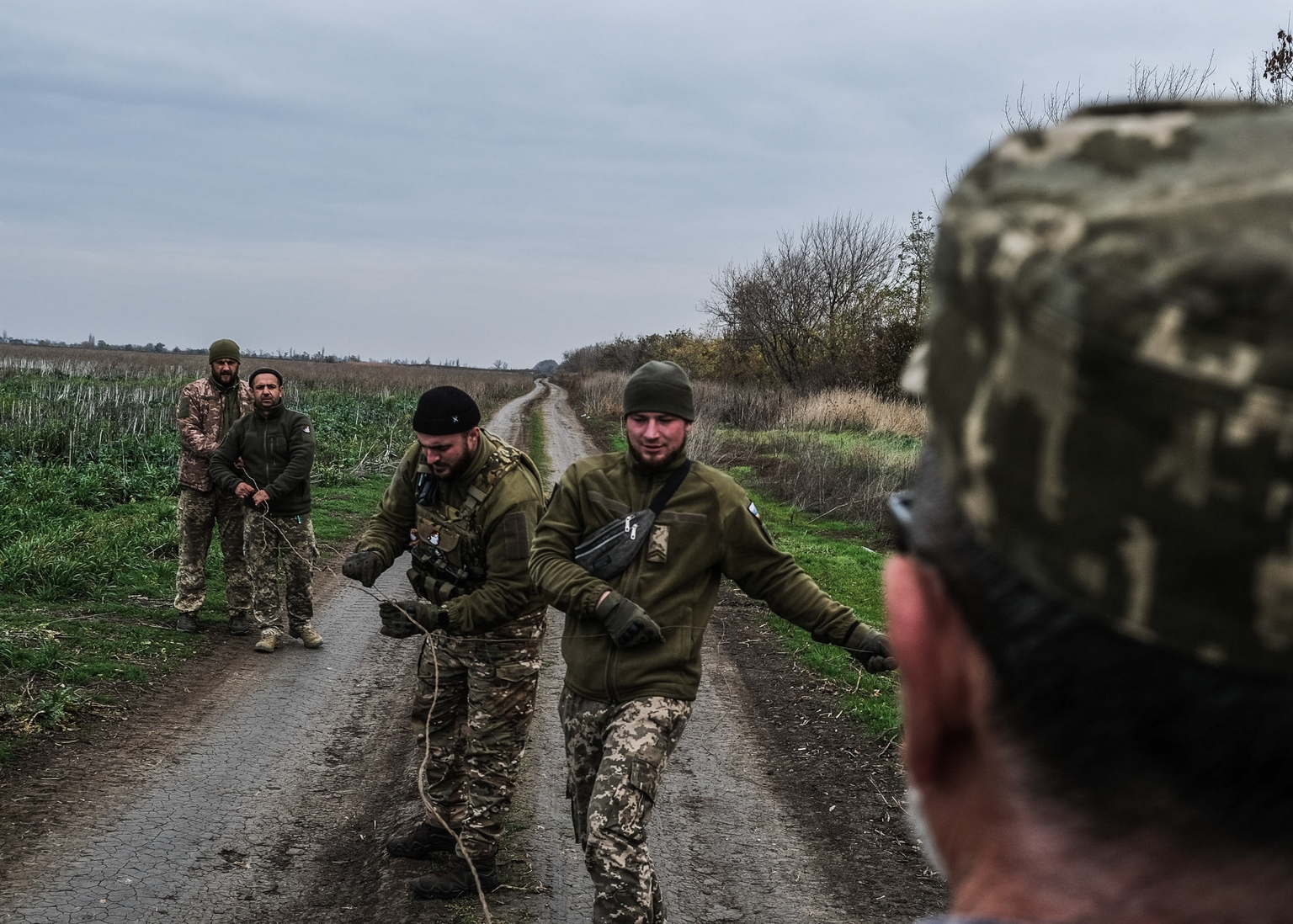
OSINT analysts and Ukrainian soldiers who spoke to the Kyiv Independent said that Russian forces on the western bank of Dnipro River are still defending their captured territory, by and large.
Russia doubled down on its claim on Kherson Oblast and other occupied territories in late September, when it held a fake “referendum” there and claimed that it was “incorporating” Kherson Oblast into the Russian Federation, in violation of international law. The Russians don’t want to hand over their only captured regional capital without a fight. Still, Russian-appointed occupation leaders have reportedly pulled back across the river.
“They’re imitating some kind of defense there,” says Tsehotskiy. “But we have data that everything of value has already been moved out of Kherson. We know for certain that the entire city administration, all the government institutions, are already empty, the buildings don’t even have flags anymore.”
“There were even cases where they left food behind because it’s hard to carry things across the Dnipro,” he says. “The local civilians have picked it apart and taken it home.”
Russian forces and their collaborators ordered up to 70,000 residents within a 15-kilometer zone east of the Dnipro River to be resettled into the still-occupied parts of the region.
Artillery fights
Muzyka says the Ukrainians are continuing their artillery strikes on Russian crossing points, bridges, logistics centers, ammo depots and command posts.
They’ve been doing this for months, making use of good intelligence from drones, satellites and people on the ground to hit the Russians where it hurts.
“We know every step they take,” says Tsehotskiy.
These pinpoint strikes degrade Russia’s ability to hold the western bank of the river. Analysts believe the Russians will eventually be forced to abandon this position.
“Ukrainians will seek to create conditions that will force Russians to withdraw,” Muzyka says. “But, at the same time, they are concerned that Russians will not give up Kherson so easily.”
Tsehotskiy says the Russians are aware that everyone sees them as occupiers and tend to bunch up for safety in numbers, making them vulnerable.
“They don’t have enough skill or power, their morale is low,” says Raven. “When we drove past their positions, we could see how awfully they lived. They’ll have a little hole half a meter deep, 1.5 meters long, so you could barely lie down, covered in a bunch of trash. They live like bums.”
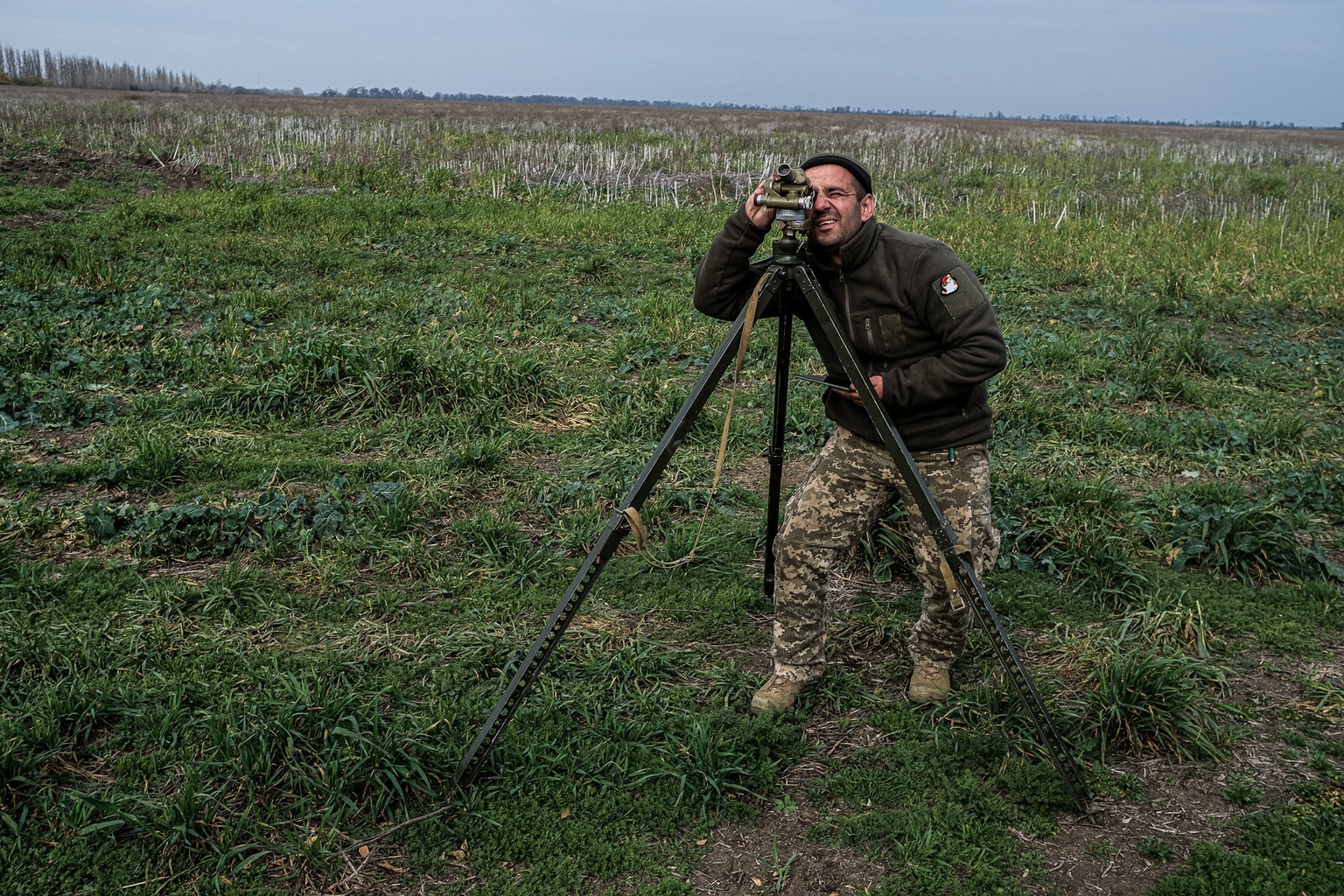
Ukraine has many tools to pick apart the Russians’ weak points. British-made M777 howitzers can be spotted getting towed towards firing positions. The elusive HIMARS multiple launch rocket system lurks in these parts as well. Like a legendary beast, it’s rarely seen out in the open but it continues to be a nightmare for the Russians.
And then there are units like Raven’s Grad team. While older and less precise, this Soviet, truck-mounted 40-tube launcher can be deadly in the right hands, Raven says. Over many months of fighting, his team has learned how to squeeze the most out of the weapon.
The Grad team’s targets included troops, armor, bridges, entrenchments, and even fire support helicopters on the ground.
"They terrorize our infantry so of course we have to destroy them,” says Raven.
This day, Nov. 3, is special — the official day of artillery and rocket forces in Ukraine. The team is not sure if they’ll have time to celebrate but they’re in an upbeat mood. The medic, Tania, is excited about some stylized kitten patches for her armor, delivered by the brigade’s American-born press liaison.
Battle damage
Months of fighting have worn down both sides’ supplies. At one point, the volume of Russian fire was 10 times that of Ukraine's. The loss of so many ammo depots, bridges and command centers changed the balance and made a noticeable difference on the battlefield.
“They’re shooting less now,” says Tsehotskiy. “They snap at us but the parity is in our favor. We’re also improving our skills here. The experience we’ve received was colossal.”
But to the Ukrainian troops on the receiving end, Russia still has more than enough firepower.
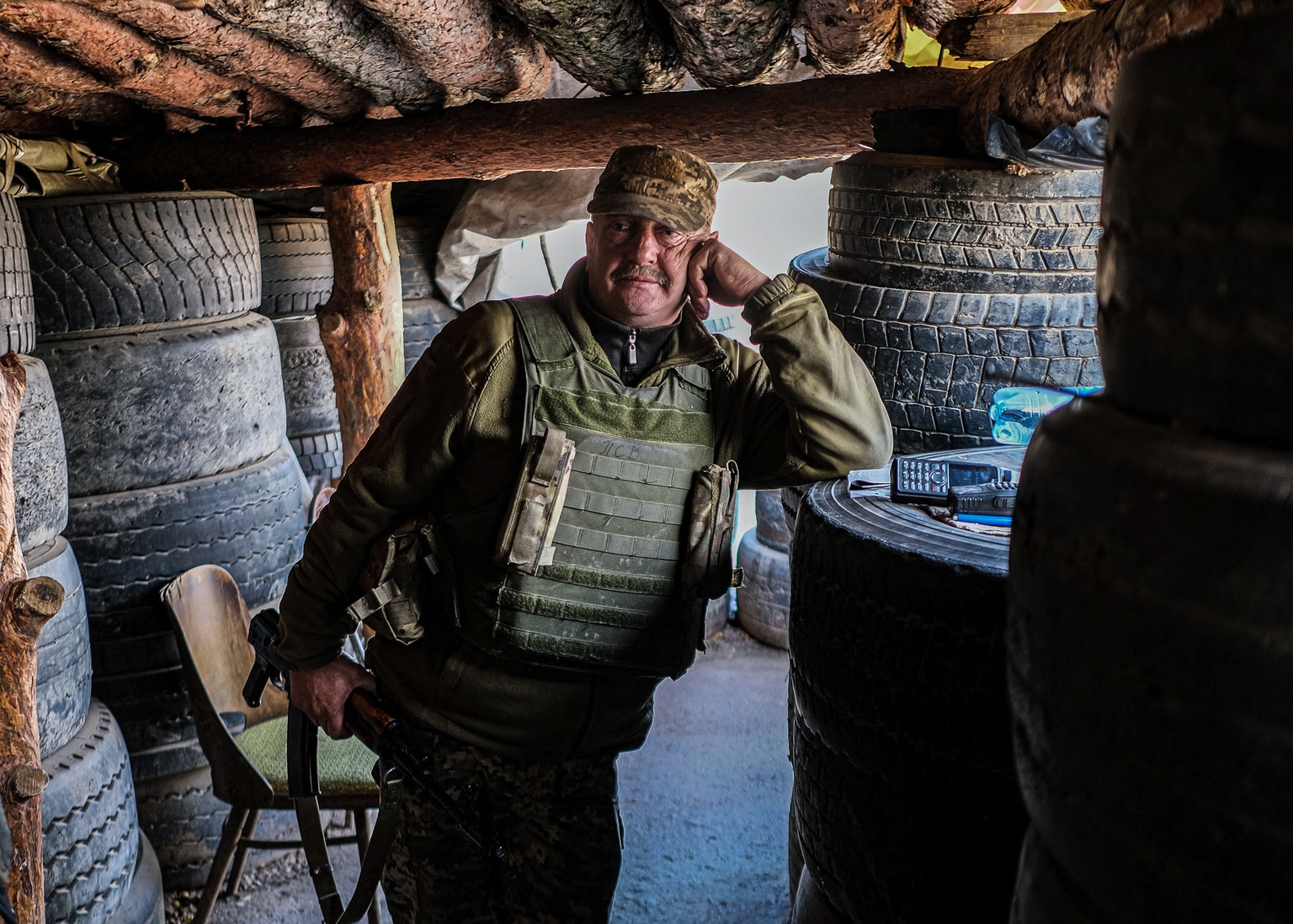
“They’re shooting intensely,” says Vitaliy, an infantryman, who spends three days at a time on the front lines. “You can’t even stick your head out. They’re shelling with artillery, with tanks and mortars.”
“There are calmer days and there are days when they’re shelling constantly and the boys have to find cover,” says Sherif.
Tania the medic agrees, saying “from the car, you never know when and where you’ll have incoming fire.”
“Sometimes we don’t even have time to leave our firing positions before they open up on us,” says Raven. “But…” He waves his hand dismissively. “We can’t say that they are very accurate. If they were as accurate as us, we wouldn’t be standing here, talking.”
____________________
Note from the author:
Hi, this is Igor Kossov, I hope you enjoyed reading my article.
I consider it a privilege to keep you informed about one of this century's greatest tragedies, Russia's ongoing invasion of Ukraine. With the help of my colleagues, I will continue to bring you in-depth insights into Ukraine's war effort, its international impacts, and the economic, social, and human cost of this war. But I cannot do it without your help. To support independent Ukrainian journalists, please consider becoming our patron. Thank you very much.











